A few months ago, I taught you how to recognize and harvest field garlic. There’s another extremely common “weed” that isn’t so good to eat, but is highly valued for its medicinal properties: plantain weed.
No, I’m not talking about the banana-like fruit. In fact, plantain weed has no relation to that plant. I’m talking specifically about plantago major, which is common all over the world. You may also see one of its siblings, like plantago lanceolata, which is similar in both appearance and medicinal value.
Plantain weed has been used for centuries in folk medicine. Externally, it’s believed to treat cuts and insect bites. Internally, it’s thought to improve digestion and reduce inflammation.
Summary:
- Plantain has anti-inflammatory and astringent properties that make it useful in many medical applications.
- Topically, you can chew up plantain leaves to make a poultice (a moist mass of herbs) that can be put on minor cuts, insect bites, and rashes.
- Internally, you can make a plantain tea to fight coughs and colds. Plantain is also thought to reduce blood pressure and glucose levels.
- Plantain tends to grow in compacted soils, like areas with high foot traffic. For that reason, you ideally want to wash plantain before consuming it.
- You can dehydrate plantain to preserve for the winter, after which you can turn it into tinctures, medicated oils, and salves.
As always, use your head. Herbal remedies can often be unpredictable.
More: Check out our Austere First Aid course, which teaches you what to do when 911 isn’t an option.
Identifying plantain weed
Plantain favors compacted soils, so it tends to sprout up along driveways and in heavily trafficked yards. If you see plantain in your garden, it’s a sign that your soil needs loosening up.
Look for smooth, ribbed leaves in a circular rosette pattern.
This time of year, a seed head may be growing up from the center of the plant, which resembles a cattail or a green ear of corn.
The leaves can be of various sizes, anywhere from two to twelve inches.
Harvesting plantain
Plantain is easy to harvest — just pull leaves by their stems from the plant. If you capture the stem along with the leaf, it makes it easier to hang and dry. Otherwise, you can just pull off leaves. Don’t forget the seed heads, since they are also known to have medicinal value. For the most part, I just stick to the leaves.
Notice where the plantain is growing. You want to avoid harvesting it by roadways and obvious animal feces. You also don’t want to harvest plantain that’s been sprayed with pesticides or herbicides.
Medical uses for plantain
In folk medicine, plantain is espoused as a cure-all that can reduce inflammation, reduce bleeding, prevent wound infections, soothe stomach aches, relieve colds, and pretty much anything you can think of.
Surprisingly, there is a great body of research to back up these claims. Plantain psyllium is a common over-the-counter remedy for diarrhea, constipation, and hemorrhoids. The leaves are incredibly fibrous, so it’s no surprise they can help stomach function.
In addition, studies have noted the benefits of plantain:
- High levels of vitamin C (wards off scurvy and boosts your immune system) and beta carotene (good for vision and your immune system)
- Cholesterol reduction
- Treatment of asthma, bronchitis, coughs, and colds
- Treatment of boils, insect bites, skin infections, herpes sores, and poison ivy
- Improved wound healing in rabbits and rats
- Treatment of chemical burns in rabbit eyes
- Reduction of blood pressure in dogs
Plantain can also prevent lithium absorption, decrease bioavailability of carbamazepine, react poorly with Warfarin, and since it can reduce blood glucose levels, diabetics on medication should be cautious.
As far as side effects, the biggest risk is a potential allergic reaction. In the field, try applying plantain to a small patch of skin before going all-out or consuming internally.
How to consume plantain in the field
For topical applications, such as cuts, insect bites, scrapes, and skin infections, the traditional way to apply plantain is as a poultice. Thoroughly chew up plantain leaves a little bit at a time (I tend to gag on them if I chew too many), spit them out, and apply the slurry to the affected area.
Plantain grows prolifically under my rabbit hutches, which is really handy when one of my rabbits scratches me (they’re like long-eared cats). I just make sure I don’t pick plantain covered in rabbit droppings.
If you can, I highly recommend washing the plantain leaves thoroughly before sticking them in your mouth. The first time I chewed up a poultice, I suffered a nasty cold for the following week. I can’t say for sure whether I got it from the plantain, but since plantain likes high-traffic areas, it only makes sense that it’s slathered in foot germs.
You could just mix plantain with a bit of water in a blender or food processor, but supposedly the enzymes in your saliva help break down the plantain and release the good chemicals. Also, swallowing the plantain juices is beneficial, so you get a little bonus there.
The trick to a poultice is keeping it on your skin and keeping it from drying out. You could wrap it with some gauze, but if you’re chewing and spitting weeds on your skin I’m going to assume that your IFAK isn’t handy. If you can find a big plantain leaf, you can wrap it around the area to protect the poultice.
Holding the plantain leaf in place can be tricky if you don’t have cordage handy. Some recommend plucking a long plantain seed head and wrapping it around the leaf. I didn’t have much luck with that: half of the seed head was too fragile and the other half was too stiff to bend.
I eventually got it to work by wrapping my primitive bandage with a long blade of grass, a plantain seed head, and a Morning Glory vine plucked from a garden bed. I braided the stiff seed head, tied the grass blade into a loose knot, and then wove the Morning Glory vine in between and tied it into a knot. Get creative!
To use fresh leaves internally, soak a handful of leaves in boiling water for a few minutes, strain the leaves, and drink the tea. Some suggest squeezing the plantain juice directly into your eye or ear for those infections, but I have yet to find a plantain leaf that juicy, and I’m leery of what I put in my eyes.
I have some friends who swear by the healing properties of plantain, who taught me to roll the leaves between my hands to release the juices, and then either rub the bruised plantain over the area or mix it with a bit of water and then drop the solution into my eyes.
Preserving plantain weed
Plantain might be plentiful in the warm months, but not so much in the winter, so it makes sense to set some aside. The most common way to preserve plantain is to dry it. There are a couple of ways to achieve this:
- Tie the stems together and hang them upside down, under cover and away from direct sunlight. A porch would be a good place.
- Chop up the leaves and throw them in a dehydrator.
If you go with the latter option, put the dehydrator on its herb setting and dry for about 16 hours or until the leaves are crumbly (it took mine much longer). Once the leaves are dry, chop them with a food processor or coffee grinder or crush them with a mortar and pestle.
Once you have your powdered plantain, here are some things you can do with it:
- Rehydrate it (with water or spit) to make a poultice
- Soak it in alcohol (vodka or pure grain alcohol) to make a medicinal tincture
- Make tea
- Make an oil infusion by soaking it in olive or fractionated coconut oil for four to six weeks
Another use for the plantain-oil infusion is to cook it in a double boiler with beeswax pellets to create a salve.
My plantain-loving friends recommended that I instead freeze it and then defrost it as needed over the winter. I’m going to try both.
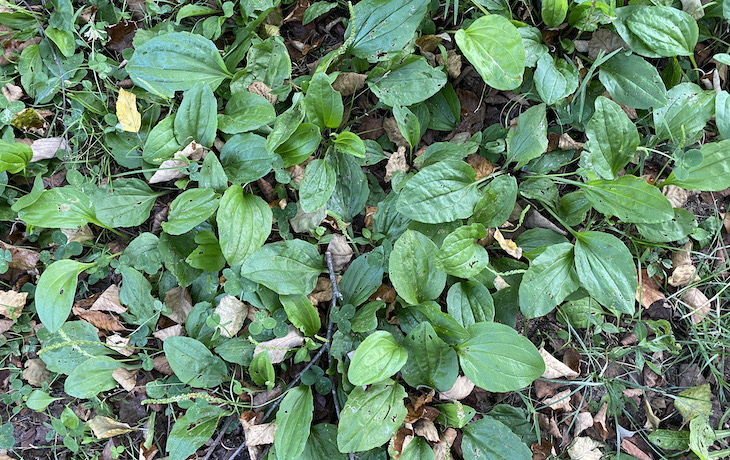
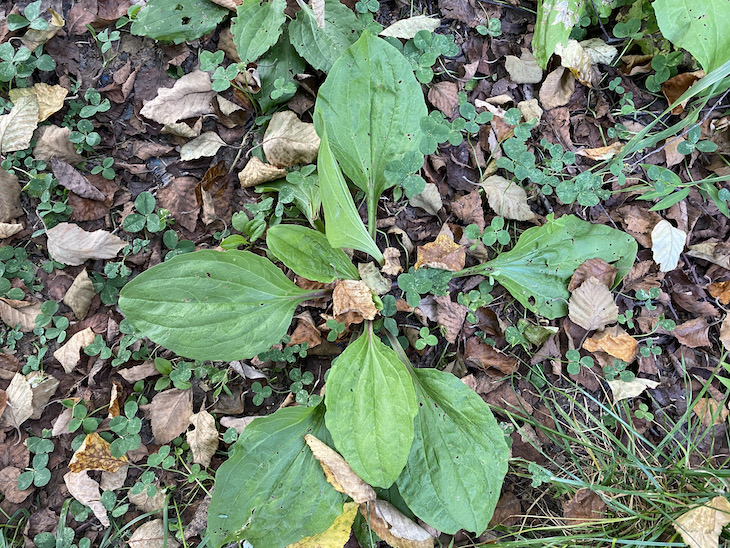
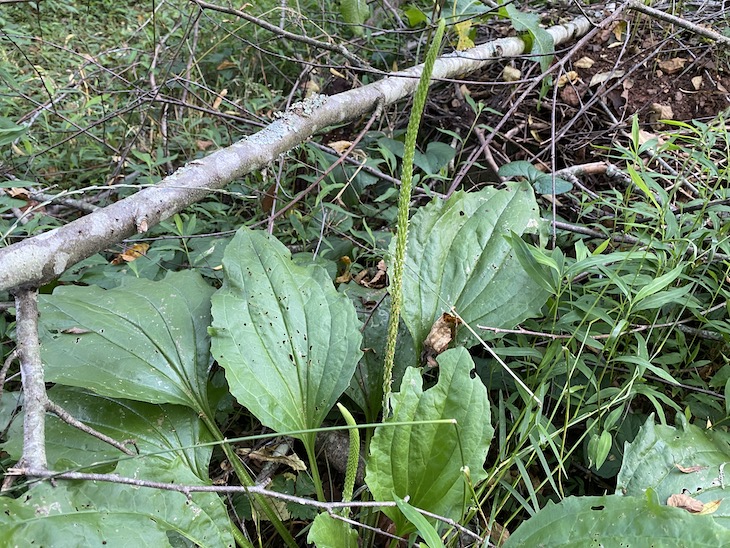
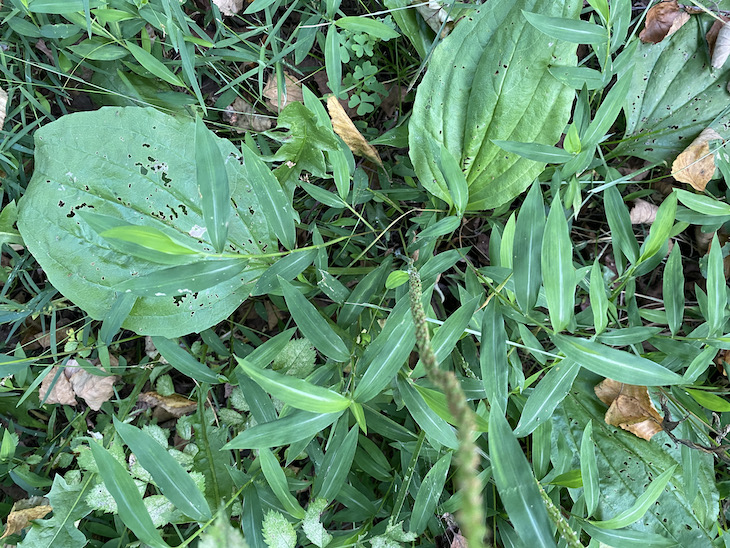
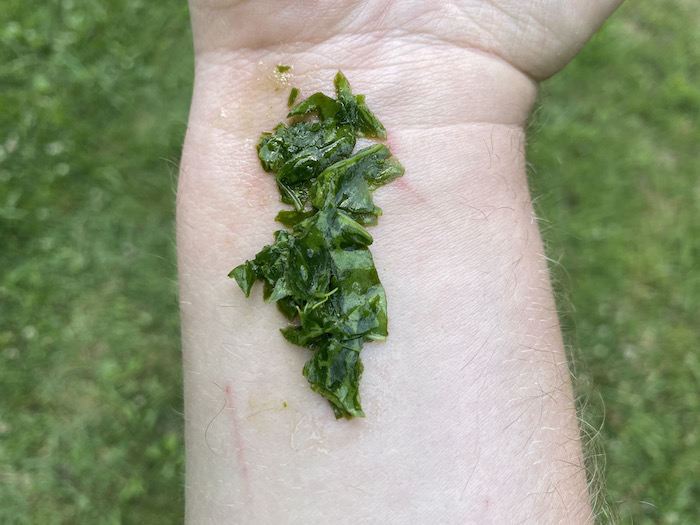
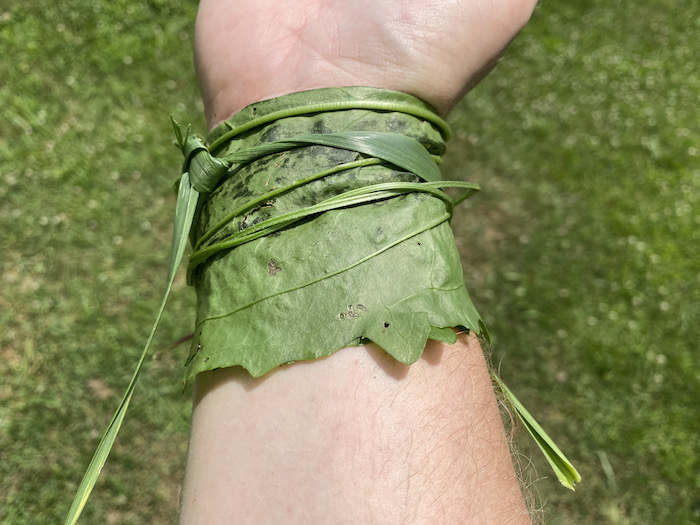
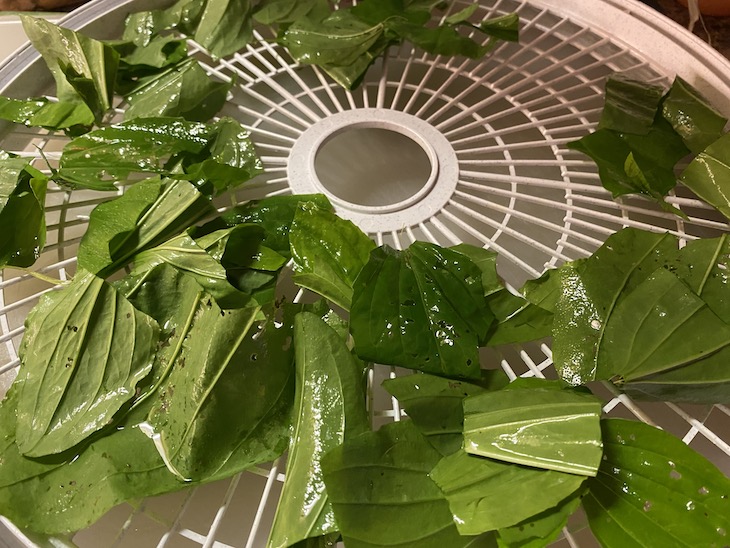
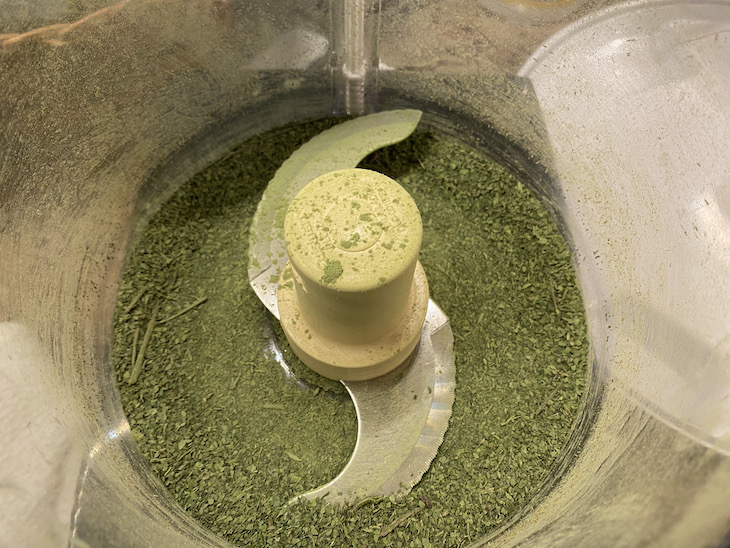
You are reporting the comment """ by on